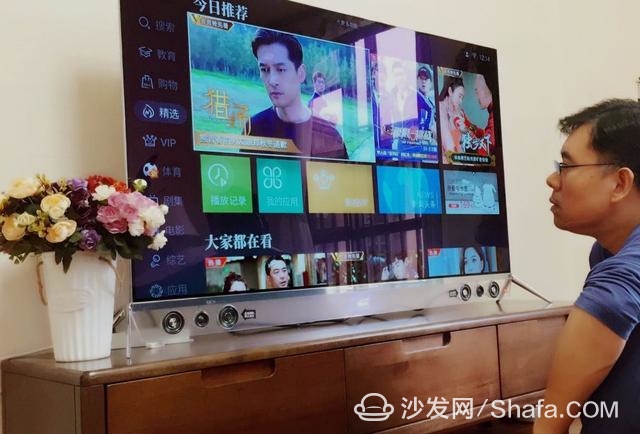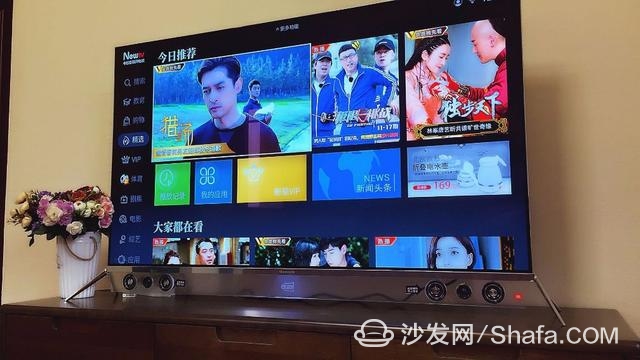
"What is the future of television?"
Currently, there are two main paths: OLED and quantum dot technology. This situation is similar to the past rivalry between plasma and LCD, where plasma once dominated the market.
Thus, it's natural to ask: "Which one is more likely to become the future of color TV — OLED or quantum dots?"
In general, OLED and quantum dot technologies are evenly matched. The OLED camp includes many companies but lacks a dominant player like Samsung in the LCD market. On the other hand, the quantum dot camp has strong industry support but fewer participants. Both have their own strengths.
Looking ahead, OLED and quantum dots will likely continue to compete over the next three years. It’s unlikely that one will completely outshine the other, just as LCD and plasma coexisted for years without one completely replacing the other.
From my personal experience, I tend to favor OLED. My reasoning is simple: QD TVs are still based on LCD technology, which isn't a major technological breakthrough. In contrast, OLED represents a new and revolutionary display technology. From a broader perspective, OLED holds more significance for future development.
There may be electroluminescent QLED TVs (so-called "real quantum dot TVs") in the next 2-3 years, but they're still in the future stage.
The true significance of OLED isn’t just about high contrast or superior image quality — although these are impressive. What makes OLED truly groundbreaking is its potential to enable flexible displays, opening up new possibilities for how we interact with screens.
I’ve noticed that when attending OLED events, the picture quality often appears better than quantum dot TVs, and vice versa. This shows that in terms of screen performance, OLED and quantum dots are very close — neither has a clear advantage over the other.

So, what’s the real advantage of OLED over quantum dots right now?
The answer is its unique flexible display capabilities.
Flexible display means two things: first, OLED can display dynamic images on curved or non-planar surfaces, allowing for large curvature; second, OLED screens can be rolled or folded. These features are not possible with liquid crystals or current quantum dot technology.
I often say that the greatest value of OLED lies in its flexibility, because only this feature can support the era of "display everywhere."
OLED flexible displays are already making an impact. Many consumers have noticed that after entering the OLED era, TV designs have become more diverse — from wallpaper-style TVs to curved models, transparent screens, and even sound field TVs. I believe we’ll see even more innovative forms in the future, all made possible by OLED’s flexible nature.
It’s expected that OLED TVs that can roll up or fold away will soon hit the market.
Consumers are starting to recognize the advanced nature of OLED. Many people who first see an OLED TV are immediately surprised by how thin it is and how vivid the image looks. This is a physiological reaction — it's the difference between OLED and traditional LCDs.
"Natural quality is hard to give up," and OLED TVs are well-known globally. I’ve seen a lot of news about OLEDs, mostly focusing on two issues: "burn-in" (also called "ghosting") and "short lifespan." Even though OLED companies have explained these issues repeatedly, many consumers still have doubts.
What’s the truth?
Over the past decade, I've written extensively about OLED, dating back to around 2004. At that time, OLED was still in the lab phase. Most of my articles were based on industry trends, company strategies, and technical features, rather than product experiences.
But I am also an actual user of OLED TVs. I’m not the first person to buy one — I purchased my first OLED TV in October 2016, and it’s been over a year since then.
I mention this because I was initially as cautious as most consumers. I worried that OLED TVs might not be mature enough and could lead to regret. After all, OLED TVs are still more expensive than LCDs.
As a rational and conservative consumer, I didn’t buy OLED until 2016 because I believed the technology had reached a mature stage. Sony later entered the OLED market in early 2017 with the A1 model, which aligns with my belief that OLED was ready for mainstream adoption.
Now, you might wonder about my real-life experience with OLED TVs.
I haven’t experienced any issues like "ghosting" or burn-in. My family has two TVs: a 55-inch 4K HDR OLED from a domestic brand, and a 60-inch 4K HDR LCD from a foreign brand. Both are used frequently in different rooms.
I usually watch news, documentaries, and occasionally shows like "Most Powerful Brain" or talk shows. I spend more time watching TV before lunch, after lunch, and before bed.
In fairness, both TVs perform well with 4K and HDR. I think the screen quality is sufficient for most needs.
I don’t need to elaborate on the LCD TV — everyone is familiar with it.
Just to clarify, my OLED TV has been problem-free. As a rational consumer, I was initially concerned about "ghosting" and "short lifespan," but I never saw any of those issues.
I even tested my OLED TV by showing a static image for 24 hours straight, hoping to find any signs of "ghosting." But I found nothing — no traces of it at all.
My understanding of "ghosting" is that while early OLED TVs may have had some issues, the problem has long been resolved. Those who keep bringing it up are like someone holding a man’s coat and shouting, “Your grandfather was a thief.â€
Now, let’s talk about the "short lifespan" of OLED TVs.
Since my OLED TV has only been used for one year, it’s hard to judge its longevity. But according to mainstream OLED manufacturers, they guarantee normal use for 50,000 hours.
That means, if you watch 10 hours a day, the TV can last about 13.7 years — far beyond the standard 8-year lifespan required by the government.
Some people may associate "organic" with something fragile, like eggs. But OLED technology is far more advanced and stable than that.
Logically, every consumer concern has likely been addressed by manufacturers. Why question it further? Of course, no product is perfect, but the issues with OLED are not about the product itself, but rather the industry supply chain.
The biggest challenge in the OLED TV industry today is the shortage of panel supply and over-reliance on a single supplier. This situation hinders growth and keeps prices high. It needs to change soon.
Smart TV/box information can focus on smart TV information network sofa butler (http://), China's influential TV box and smart TV website, providing information, communication, TV boxes, smart TVs, smart TV software, etc. Answering questions.Lithium Battery 2Cr5,2Cr5 Lithium Battery,2Cr5 6V Lithium Battery,6V 2Cr5 Lithium Battery
Jiangmen Hongli Energy Co.ltd , https://www.honglienergy.com